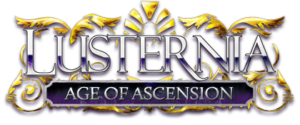3.8 EMOTIONS
Emotions are a shorthand way of expressing various emotions with one or two words. Generally, these emotions will be seen by everyone in the same location as you. There are hundreds of emotes, and more being added whenever a player suggests a good one. An example of an emote would be SMILE, to smile (unsurprisingly) or SALUTE. Most emotes may be targeted at someone too. So you could, for instance POKE ROARK to poke Roark in the arm. Emotions run the gamut from the mundane to the sometimes silly (try TIGGER, for instance) and some players delight in trying to discover new ones.
So if, for instance, Roark typed FLUTTER ESTARRA, Roark would see:
You flutter your eyelashes charmingly at Estarra.
Estarra would see:
Roark flutters his eyelashes charmingly at you.
and everyone else in the room would see:
Roark flutters his eyelashes charmingly at Estarra.
You can also emote at objects around you, for example, POKE ROCK. If you happen to be holding a rock, and you want to poke a different rock in your room, you can POKE ROCK HERE. The 'here' modifier means to ignore your inventory and target only objects in your room.
A list of emotions may be found using the commands outlined in HELP EMOTIONLIST.
Also see HELP EMOTICONS, HELP EMOTING.
EMOVERRIDE
==========
Sometimes you may find that, no matter how lovely an emote may be, it just does not feel right for your character! Rather than having to type out your particularly boisterous and manly laugh every time you decide to laugh with a custom emote, however, the EMOVERRIDE (emote override) system allows you to change any basic emote to serve your purpose. While the syntax alone will provide all the commands you need, below is a small example of how to use it.
Now then, let us take a look at John Everyman's smile. What is seen by others would be:
John's mouth turns up as his face breaks into a smile.
Let us say that John is a bit swarthy, though, and would like to add a hint of roguish appeal to his smile? He would then begin by typing
EMOVERRIDE NEW SMILE
This would generate a number associated with his personal smile emote. Let us say, for example's sake, he has emote number one. He would then begin filling it out. By checking
EMOVERRIDE 1
he would see that it is not enabled, and the 1, 3, 1t, 2t, and 3t fields are not filled out. These fields mean:
1 - The text that you (the first party) will see when untargetted.
3 - The text that everyone else (the third party) will see when untargetted.
1t - The text that you will see when targetting the emote.
2t - The text that your target will see when you use the emote on them.
3t - The text that everyone else will see when you target the emote.
To start, John only wishes to have a smile that he will not target at anyone else. To do so, he needs to make use of some creative writing and some variables. Each variable is listed below, as well as its use. It is worth noting that gender variables will not need to be replaced, and will automatically sort themselves with the word shown in the example.
$(name$) - Your name!
$(him$) - him/her/them
$(he$) - he/she/they
$(his$) - his/her/their
He would begin by using the following examples.
EMOVERRIDE 1 SET 1 You smile roguishly at everyone around you.
EMOVERRIDE 1 SET 3 With roguish appeal, $(name$) flashes a swarthy smile.
By doing this, every time he types SMILE, he'd have his own special smile to show off to the world. But what if he decides he wants to target another with this smile? Well, he would make use of the variables shown below as well! These will intelligently pull the gender of your target into the emote, just as the previous would pull your own!
$(lname$) - Your target's name!
$(lhim$) - him/her/them
$(lhe$) - he/she/they
$(lhis$) - his/her/their
And then he could simply:
EMOVERRIDE 1 SET 1T You smile roguishly towards $(lname$).
EMOVERRIDE 1 SET 2T $+(name$) flashes you a swarthy smile full of roguish appeal.
- Variables at the beginning of a sentence MUST have this + sign between the $ and the (
EMOVERRIDE 1 SET 3T With roguish appeal, $(name$) flashes $(lname$) a swarthy smile.
Now, John Everyman has his very own swarthy smile. All that is left to do is ENABLE his emote by using the appropriate syntax. By following his example, you are free to customise your emoting experience even further, and set yourself apart from the masses!
System Notes:
-------------
- Like all systems, emoverride may have bugs in it. Should you find that you generated an untrapped error, please be sure to file a BUG report as soon as possible.
- Take care to be responsible with your emotes. Do not assume any action on the part of your target or your viewer! Not everyone will react the same way to your wink as you think they might, so you should leave the power of choice up to the recipient!
- There are some emotes that cannot be overridden, as they are coded - such as LAUGH and AGREE.
